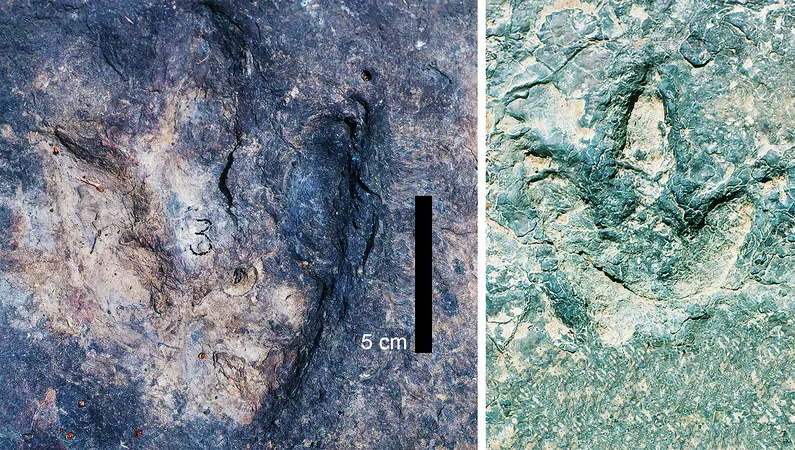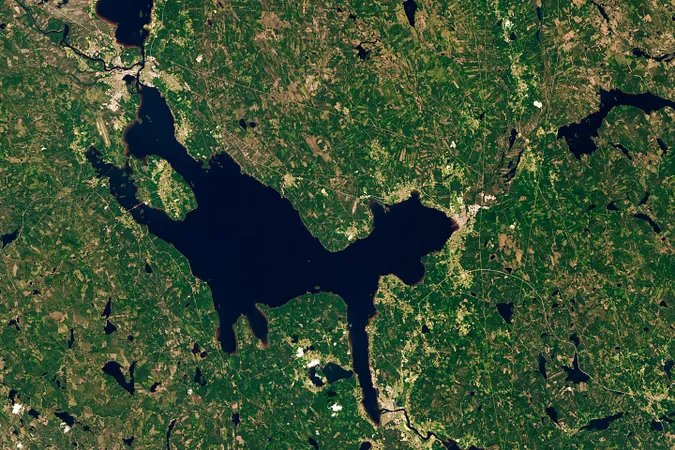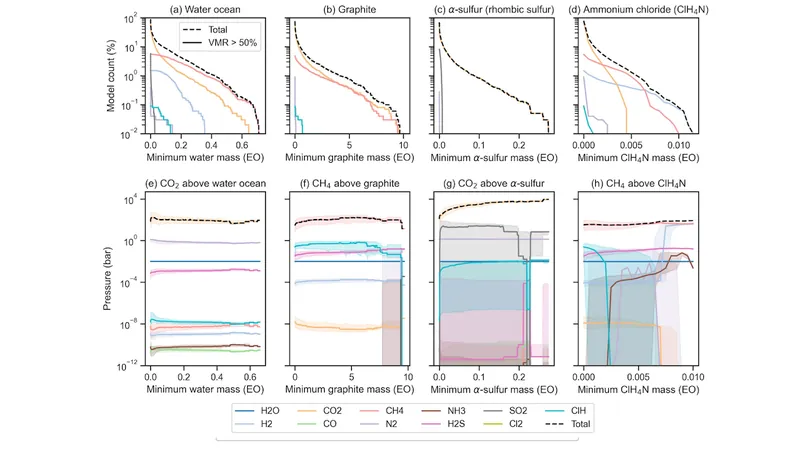
Unveiling the Ancient Secrets: Matching Dinosaur Footprints Discovered Across the Atlantic!
2025-06-10
Author: Emma
A Journey Back in Time: The Dinosaur Footprints of Cameroon and Brazil
In the heart of what is now northern Cameroon, a single dinosaur stride imprinted into wet river mud leads us back 120 million years. This footprint, characterized by three clawed toes, was preserved through the ages, becoming a vital clue in our understanding of Earth's prehistoric past.
A World Before Oceans: The Supercontinent Connection
During the Early Cretaceous period, Cameroon and northeastern Brazil were once neighbors, bound together by a sprawling, swampy landscape before the Atlantic Ocean split them apart. This uncharted region, known as Gondwana, was a bustling habitat where long-necked plant-eaters roamed and sharp-toothed predators stalked their prey, leaving behind a trail of footprints captured in clay.
Geological Revelations: A Study that Bridges Continents
Recent research led by paleontologist Louis L. Jacobs of Southern Methodist University has unveiled over 260 dinosaur tracks across the Koum Basin in Cameroon and the Borborema region in Brazil. Remarkably, these prints are not only similar in age but also in shape, illuminating the existence of a massive Dinosaur Dispersal Corridor that connected these continents.
Life in Motion: The Dinosaur Highway
Most of the discovered footprints belong to swift theropods, the agile carnivores of their time, while other tracks indicate the presence of gentle giants like sauropods. Evidence of a rich ecosystem thrives here, with fossilized remains of crocodilians, turtles, and early mammals like Abelodon abeli offering a glimpse into the dynamic web of life that flourished along these ancient waterways.
The Legacy of Continental Drift
These twin sites reveal a moment in history when continents were still connected—a fleeting opportunity for prehistoric animals to migrate. The shallow river valleys provided essential resources like water, vegetation, and soft ground to record their journeys.
Continents Apart, Footprints Together: A Modern Perspective
Today, the dinosaur tracks serve as more than just historical evidence; they enhance our understanding of continental drift and the ecological shifts that accompany it. The study of these footprints aids in developing models that predict where natural resources might lie, and they offer insights into how species adapt as their environments transform.
Step Into History: Explore the Connection Today
Visitors to Cameroon can now tread where these ancient creatures once roamed, with marked trails leading to the preserved footprints. Local guides describe it as a 'story written in stone,' inviting all to witness the past that shaped our planet.
A Continual Discovery: What Lies Ahead?
As researchers examine, map, and analyze these ancient tracks, the story of prehistoric migration unfolds further. There may still be corridors waiting to be discovered, revealing just how intricate the journeys of these magnificent creatures were. The footprints remind us that though continents drift slowly, these movements have the power to reshape the very fabric of our world.
So, as we uncover the mudstone diaries of Cameroon and Brazil, we find not only evidence of how these creatures thrived beneath a once-connected supercontinent but also lessons for our modern environment.









 Brasil (PT)
Brasil (PT)
 Canada (EN)
Canada (EN)
 Chile (ES)
Chile (ES)
 Česko (CS)
Česko (CS)
 대한민국 (KO)
대한민국 (KO)
 España (ES)
España (ES)
 France (FR)
France (FR)
 Hong Kong (EN)
Hong Kong (EN)
 Italia (IT)
Italia (IT)
 日本 (JA)
日本 (JA)
 Magyarország (HU)
Magyarország (HU)
 Norge (NO)
Norge (NO)
 Polska (PL)
Polska (PL)
 Schweiz (DE)
Schweiz (DE)
 Singapore (EN)
Singapore (EN)
 Sverige (SV)
Sverige (SV)
 Suomi (FI)
Suomi (FI)
 Türkiye (TR)
Türkiye (TR)
 الإمارات العربية المتحدة (AR)
الإمارات العربية المتحدة (AR)